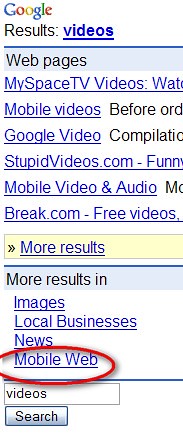Opera published some very interesting data yesterday regarding Opera Mini users’ habits. They looked at aggregate and anonymous traffic of more than 44 million cumulative Opera Mini users worldwide.
Key findings of the report are that:
– Opera Mini users go mainly to social networking sites, it accounts for almost 41% of traffic. Those sites are either desktop websites that people want to access from their phones (ie. Facebook), or sites specifically designed for use on a mobile phone. (ie. MocoSpace).
– More than 11.9 million people used Opera Mini in March to browse 2.4 billion pages. Thus far, more than 44 million cumulative users have tried Opera Mini.
– “One Web will triumph over WAP content:” translate: “WAP is dead”: Opera reports that “full” web surfing comprises more than 77% of all traffic, and traffic to WAP sites has declined. Well, that’s no surprise, Opera Mini users are aware that they can browse desktop websites from their phone so they prefer to do so, but remember that there are 3 billion mobile phones worldwide, and a large part of them access more to mobile sites than full websites, since they mostly use the native WAP browser pre-installed on their phone.
So unless every mobile user downloads Opera Mini or buy a high end phone, WAP (WML) and mobile sites will still be used in majority.
– Nearly a quarter of all traffic is headed to content portals or search engines.
Also included in the report is a snapshot of the top 10 countries for Opera Mini ranked by usage, you can see that most of the top countries are not the richest ones, which again proves that developing countries represent a major opportunity in terms of mobile services.
Snapshot: China
- Web portal content and search engine access is extremely popular in China, accounting for nearly 55% of the traffic.
- E-commerce and e-mail are not yet as popular in China as in other parts of the world. Together, these two categories combine to create less than 2% of overall Opera Mini traffic in China.
Top 10 sites in China

- www.sina.com
- www.baidu.com
- www.google.cn
- www.ko.cn
- news.sohu.com
- www.xiaonei.com
- www.3g.cn
- www.paojiao.com
- www.188bet.com
- www.feiku.com
Snapshot: United States
- More than 63% of U.S. Web traffic on mobile phones is to social networks, tying it with Indonesia for the number one spot.
Top 10 sites in the U.S.

- www.myspace.com
- www.google.com
- www.mocospace.com
- www.yahoo.com
- www.facebook.com
- www.live.com
- www.hi5.com
- www.wikipedia.org
- www.itsmy.com
- www.ebay.com
Snapshot: United Kingdom
- The United Kingdom is the world leader in mobile e-mail, although that number remains small. More than 11% of traffic in Q1 was to Web-based e-mail services.
Top 10 sites in the U.K.

- www.facebook.com
- www.google.co.uk
- www.live.com
- www.bebo.com
- www.mocospace.com
- news.bbc.co.uk
- uk.yahoo.com
- www.itsmy.com
- www.faceparty.com
- www.ebay.co.uk


